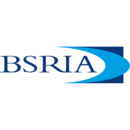BIM classification
Classification is fundamental to achieving effective information management, and has been identified as one of seven components required for Level 2 building information modelling (BIM).
This process of deciding what 'things' are called is causing some issues in the BIM world. If you have a vast quantity of data or information, that can be a very powerful resource. However, all that potential may be difficult to realise if you can't find a particular piece of information efficiently when you need it.
Classification can be defined as, 'The act or process of dividing things into groups according to their type.'
Classification has been used in the construction world for many years, often without the users knowing it. For example, many engineers would recognise that a section called 'T10' in their specification dealt with 'Gas/ oil fired boilers'. This came from a classification system called Common Arrangement of Work Sections (CAWS) which covered architectural and MEP (Mechanical Electrical and Plumbing) elements for construction projects.
Subsequently, Uniclass was derived from this system and gave the opportunity to classify 'things' in different ways, not simply as a system or an object. Uniclass was based on the general structure described in ISO 12006, which promoted the use of classification classes, each of which relates to a classification need. As well as products (or objects), some of the other classes suggested by ISO 12006 are:
- Entity e.g. a building, a bridge, a tunnel.
- Complex (a group of entities) e.g. airports, hospitals, universities, power stations.
- Space e.g. office, canteen, parking area, operating theatre.
- Product e.g. boiler, door, drain pipe.
- Facilities; this combines the space with an activity which can be carried out there, for example, an operating theatre.
Other classes can be added, such as 'system', which works very well in an MEP environment. Similarly, an 'activities' class would be very helpful for defining a range of activities which might be able to be done within a particular space, as an alternative to using the 'facilities' class.
Although consultants and contractors have managed well using just a couple of the classes above, other groups have found great benefit in classifying in a number of different ways. For example, it would be very helpful in a hospital facilities management (FM) environment to use the 'spaces', 'activities', 'systems' and 'products' classes.
In a hospital it is useful to classify the 'spaces' in the first instance by type, and then to classify each space further by which 'activities' can be carried out within them. From this it is possible to classify the 'systems' which support the spaces and then the 'products' which form the systems. A practical example would be if the chilled water system was taken out of action, you could quickly see which spaces were affected, such as an operating theatre. Once that's known it is simple to determine which activities cannot be carried out, such as, a number of planned operations. Also, other products or equipment can be identified which can now be worked on as the system they belong to is not working, for example, chillers or chilled beams.
In this era of greater collaboration it is not enough to know what we are calling things or which classification system we are using. We must communicate with those we are working with to make sure that the solution suits all of us, and moreover that it is suitable for the whole life of the asset and not just the design, or the construction phase.
It may be that a new classification system is required to satisfy all parties involved in an asset and to make information available throughout its whole life. This is no simple task, and it becomes more complex when the range of assets is considered in both buildings and infrastructure.
It is tempting to try to find solutions to what we do individually, but it is vital that any solution must be suitable for all stages of an asset's life, for all types of assets and for all those involved in the asset. Once this has been achieved, the full potential of BIM can start to be exploited and tangible benefits demonstrated in the use of information management processes.
The Technology Strategy Board launched the competition, “A digital tool for building information modelling”, in February 2014, a £1.5m competition for the development of free-to-use BIM digital tools for a classification system and digital plan of work, the outstanding components of Level 2 BIM as defined by the BIM Task Group. See Digital plan of work for more information.
This article originally appeared in the September 2014 edition of BSRIA's Delta T magazine. It was written by Sarah Birchall, Sustainability Engineer, BSRIA Sustainable Construction Group. It has been posted here in a slightly modified form by --BSRIA 09:10, 5 December 2014 (UTC)
[edit] Related articles on Designing Buildings Wiki
BIM Directory
[edit] Building Information Modelling (BIM)
[edit] Information Requirements
Employer's Information Requirements (EIR)
Organisational Information Requirements (OIR)
Asset Information Requirements (AIR)
[edit] Information Models
Project Information Model (PIM)
[edit] Collaborative Practices
Industry Foundation Classes (IFC)







